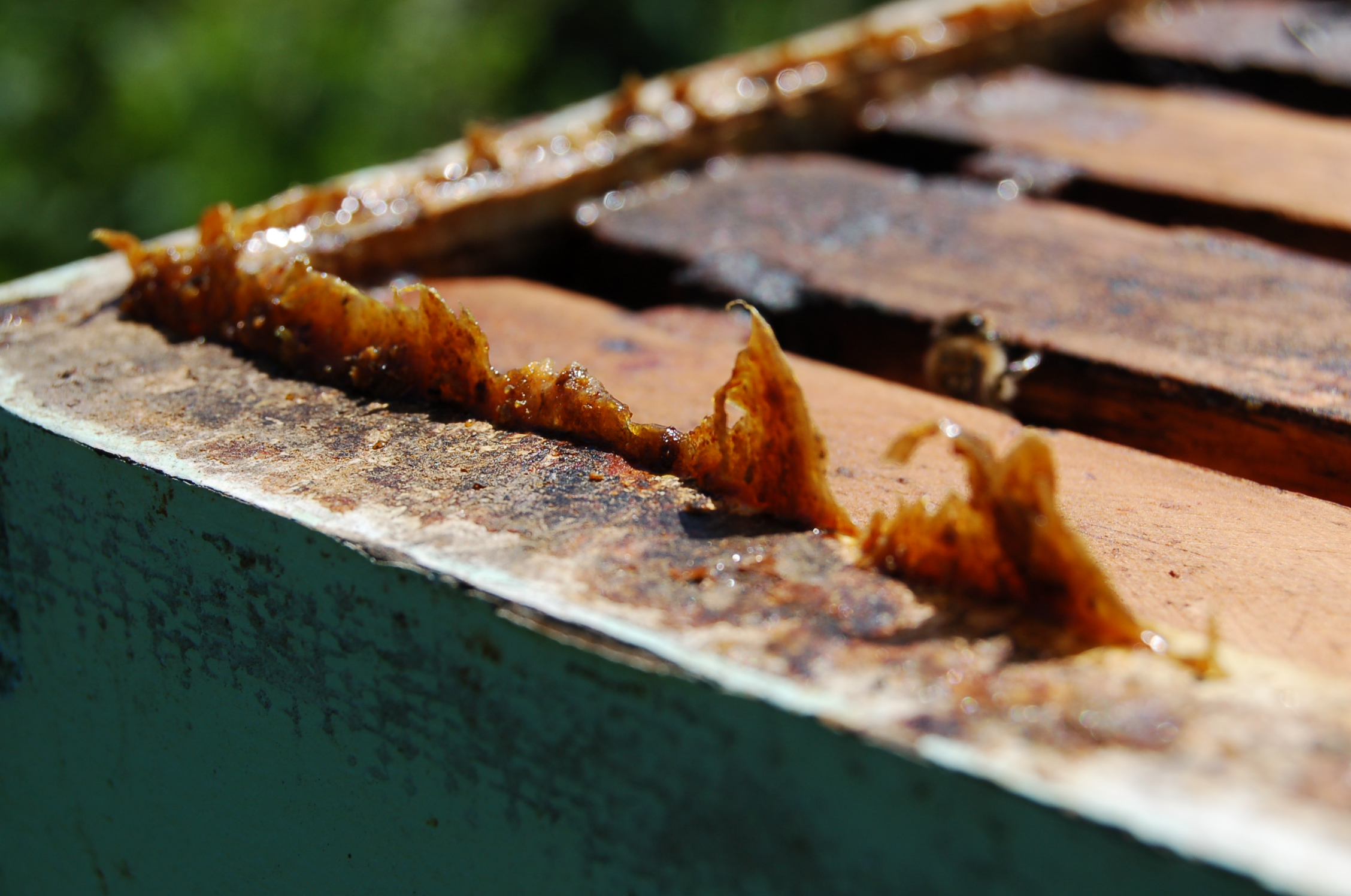Propolis and Propolis Resolution
Propolis is one of the most well documented bee products whose properties contribute to the maintenance of general health within the hive. Coats everything from the cells until the entire interior of the cell.
Propolis is a resinous substance collected by bees from the edges of tender leafs , of the buds, in early spring, from poplar, chestnut, hazelnut, coniferous pine and thuja in the summer of oaks, alders, in autumn the collection is from heather and arbutus, of course limited number of plants in relation to those used for nectar and pollen. When the main sources are depleted collect propolis from secondary plants.
When the main sources are depleted, the bees collect propolis from secondary plants. With propolis sterilize the hive and protect them from any contagious disease. In addition it is used as building material inside the hive filling the cracks, holes from knots, in autumn bees diminish the entrance depositing propolis as cement, and almost all year they varnishe the empty cells, paving the way for give birth to the queen.
Characteristics:
Propolis contains approximately 55% resins and balsams, 30% wax, 10% essential oils and 5% pollen, enzymes, and various other substances.
It is rich in amino acids, small amounts of of trace elements also contains many vitamins including vioflavines, vitamin B3 and vitamin C, all of the above contain about 200 different ingredients that give propolis antibacterial action. Where necessary for the beehive more propolis, use the mix more wax and pollen (lower quality).
Depending on the plant of origin and the pollen content, wax or resinous substances, presents a large color spectrum starting from dark green to pale yellow without neglecting their blends with all shades of brown. The melting point is around 65 C. It has a very pleasant smell, smells like incense, vanilla, wax and honey, etc., therein contributing the essential oils it contains.




